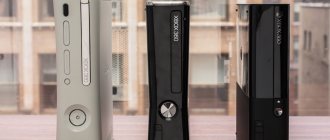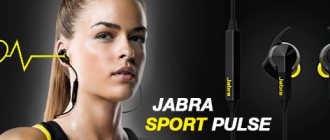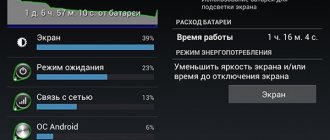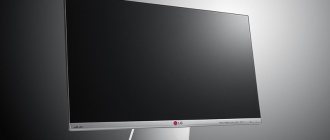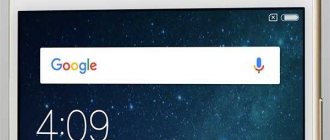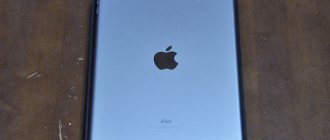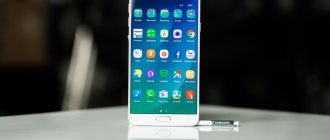At the beginning of the month, I reviewed the latest flagship of the South Korean company LG - G3. Now I got my hands on the LG G3 S. This is, in fact, a device of average characteristics placed in a flagship design. The differences between the G3 and G3 S are visible in everything: in the hardware, in the design itself, even in the number of SIM card slots. Yes, the G3 S is a dual-SIM phone. So stop, first things first. Let's take a closer look at the younger brother of the LG G3 under the cut.
Telegram channel of the creator of Trashbox about technology
Specifications of LG G3 S:
- Case material: plastic and glass
- Color: gray, white, golden
- Operating system: Android 4.4.2
- Network: GSM 850/900/1800/1900, HSDPA 850/900/1900/2100, LTE 800/1800/2600 (D722 version only), dual SIM card support
- Processor: Quad-core Qualcomm Snapdragon 400, 1.2 GHz
- RAM: 1 GB
- Data storage: 8 GB + Micro SD (up to 64 GB)
- Screen: capacitive, IPS, 5 inches, 1280x720 pixels
- Camera: 8 MP main with LED flash and laser autofocus system, 1.3 MP front
- Additionally: Wi-Fi 802.11 b/g/n, GPS, Glonass, Bluetooth 4.0
- Battery: 2540 mAh
- Dimensions: 69.6 x 137.7 x 10.3 mm
- Weight: 134 g
- Device price: 13,000 rub. / 3500 UAH.
Appearance and ease of use
The design of the LG G3 S, I repeat, is not much different from. The device as a whole looks very attractive. I was able to find four differences in appearance from the flagship.
First of all, the G3 S is smaller. If the flagship with its 5.5-inch display was comparable in size to 5-inch devices, then this model can be compared with 4.7-inch devices.
Secondly, the material of the back cover. If “imitates metal” is not just a postscript in the characteristics, then here it feels and tastes like plastic, like plastic. However, the phone fits well in the hand and does not cause any discomfort.
Thirdly, the flash. The G3 had a double LED, but here it’s a regular one.
And fourthly, the hole for the conversational microphone has moved to the other side of the mini-USB port.
Everything else is copied from the flagship edition. On the front panel there is a speaker (from which the paint has peeled off slightly), a camera, sensors (on top) and the LG logo (on the bottom).
On the bottom edge there is a 3.5 mm headset jack, a microUSB port, and a microphone hole.
On the top edge there is an additional microphone and an infrared port, which is used to control household appliances.
On the back cover there is a logo again, now in the middle. Camera with flash and laser autofocus, lock and volume buttons, and speaker grille.
Review of the flagship Android smartphone LG G3
The LG G3 is, on paper, the most interesting Android flagship of 2014. Here you have a screen with QuadHD resolution (2560×1440 pixels), and the latest Qualcomm Snapdragon 801 processor, and a camera with an active autofocus system that has not yet been seen (at least in smartphones). In addition, LG has managed to pack these outstanding specs into an attractive design with thin bezels around the screen. It would seem that we have before us another king of the hill. But is this really so?
Main technical characteristics of LG G3
When looking at the technical characteristics of the LG G3 (as well as other Android flagships of 2013), I personally get the feeling that the market is stagnating. At least, I personally don’t see any serious improvements: replacing the Snapdragon 800 processor with an 801 (which differs from its predecessor only in the maximum clock frequency) is clearly not one of them. Increasing the screen resolution is, of course, a heart-warming event, but in practice, again, hardly anyone will notice the difference with FullHD. Although LG is favored by the fact that the company decided to use an active autofocus module in the camera - such solutions have never been seen in phones before.
Some surprise, however, is the fact that the version with 16 GB of internal memory (the same one that will be available in Ukraine at a recommended price of 8,000 hryvnia) is equipped with 2 GB of RAM, but the 32 GB version will come with 3 GB of RAM . It is unclear what caused such discrimination.
| LG G3 | |
| operating system | Android 4.4 KitKat |
| Display | IPS, 5.5 inches, 2560×1440 pixels (QuadHD), Gorilla Glass 3 protective glass |
| CPU | quad-core Snapdragon 801 (4 cores Krait 400), clock frequency 2.5 GHz, video Adreno 330 (578 MHz) |
| RAM | 2 or 3 GB |
| Flash memory | 16 or 32 GB, support for microSDXC memory cards up to 128 GB |
| Camera | 13 MP, dual LED flash, laser autofocus, optical image stabilization, HD video 60fps |
| Wireless technologies | Wi-Fi b/g/n/ac (2.4/5 GHz), Bluetooth 4.0 LE (APT-x support for audio) |
| Interfaces | micro-USB, 3.5 mm headphone output |
| Navigation | GPS, GLONASS |
| Battery | 3000 mAh (11.4 Wh) |
| Dimensions and weight | 146x75x9 mm, 149 grams |
Appearance and design
LG G3 looks, in my opinion, quite distinctive. This effect is achieved due to the very thin side frames of the screen; the “forehead” and “chin” above and below the screen are also very small. I think that I will not be mistaken if I say that in terms of the ratio of screen area to front panel area, the G3 ranks first among smartphones available today.
The back cover of the device is plastic. A transparent varnish is applied to the inner layer with a metallic texture. It looks good, fingerprints are almost invisible, but there are concerns that the varnish will be scratched.
The LG G3 fits comfortably in a large man's hand. Personally, I didn’t like the slippery back cover, but otherwise the “grip” is fine. There are no buttons on the side faces, which means it’s also impossible to accidentally press them.
All buttons - namely the volume and power/lock keys - are located on the back. This solution was first used in the predecessor of the G3 - the LG G2 smartphone. The G3's keys have a texture that makes them easier to locate on the back panel. I admit, I personally have not gotten used to this arrangement of buttons, but many of my friends claim that it is more convenient than the keys on the side faces.
There's nothing on the top of the LG G3 other than an infrared transmitter and one of two microphones. At the bottom there is a second microphone, a micro-USB connector and a headphone output.
Personally, I was interested in comparing the LG G3 with the Samsung Galaxy S5. In my opinion, the LG flagship definitely looks more interesting: with equal dimensions, it has a noticeably larger screen, better technical characteristics and a more pleasant appearance. Although from a tactile point of view I like the material of the back panel of the SGS5 (matte plastic) better.
By the way, under the hood, the LG G3 and Galaxy S5 reveal amazing similarities. I'm talking about the placement of contacts for wireless charging, speaker, battery... Even the slots for the SIM card and memory card are located the same way - end to end on top of each other!
Screen
LG G3 was the first smartphone with QuadHD screen resolution (2560x1440 pixels) to reach our editorial office, so we approached the study of screen quality with particular passion. The 5.5-inch matrix is made using IPS technology (LG itself calls it “True HD-IPS”) and is protected by Gorilla Glass 3.
I’ll be honest right away - I didn’t notice much of a difference between QuadHD and FullHD. If you look closely at the screen from a close distance, you can see that on the LG G3 (pixel density 534 ppi) the picture looks smoother than on the Galaxy S5 (432 ppi) or Nexus 5 (445 ppi), but if you don’t crawl across the display with your nose, then nothing can be noticed. Moreover, even when shooting the screen zoomed in, the difference is not noticeable, although it is clear that the SGS5 display (AMOLED with PenTile) has less clarity than the IPS screens in the LG G3 and Nexus 5.
From left to right: LG G3, Samsung Galaxy S5, LG Nexus 5
But what really catches your eye is the incomprehensible sharpening effect, which for some reason is applied to the text displayed on the screen. As a result, on any background other than white, the letters have thin white borders. This is very noticeable and makes comfortable reading text from the LG G3 screen almost impossible.
Screen quality measurements (see our methodology) showed that in all respects except resolution, the LG G3 can be called average at best. For example, the maximum screen brightness is only 355 cd/m2, the contrast is 582:1. This is most likely due to the very high pixel density of the pixel grid, and an additional increase in backlight brightness would greatly affect battery life. However, despite the modest brightness, the screen is quite readable in the sun.
Among other features of the display in the LG G3, we note the color gamut, which is somewhat below sRGB, the color temperature increased to 7500 K (let me remind you, the standard is 6500 K, and it’s even better to give users the opportunity to adjust it themselves) and a crooked gamma. In general, the screen is just a screen, nothing special.
Sound
The external speaker in the LG G3 is very similar to that in the Nexus 5: it is not very intelligible and can crackle at maximum volume.
The headphone output is noticeably higher quality than that of the Nexus 5 (there is audibly no crosstalk or clipping in the left channel, a well-known problem with the Nexus 5 and LG G2), and is roughly similar to the Galaxy S5. But the maximum volume is low and falls somewhat short even of the Nexus 5 when using the same headphones.
Interface and functionality
I’ll say right away: I’ve never personally used an LG smartphone (Nexus doesn’t count), so I haven’t encountered previous versions of Google’s proprietary shell. I rather liked the version used in the LG G3 than not.
The shell is designed in the now fashionable flat style and leaves a strong feeling that LG really wants to be like another well-known Korean company. At least, almost all the functions that were in my Samsung Galaxy S4 are present in the G3: for example, LG Health instead of S Health, QuickMemo+ instead of S Note, there is even a completely useless function for tracking the user's eyes (the smartphone will not turn off the screen until you are looking at him). It doesn't do any good, it just drains the battery faster. There's also a version of Google Now called LG SmartTips that promises to "provide tips based on the user's location and phone usage patterns." In practice, during the entire time she gave only one useful hint, suggesting that I add a phone number with whom I often communicate to the phone book. The same Google Now offers much more useful information.
Among the pleasant little things, I would like to note the presence of an FM receiver. If I'm not mistaken, the LG G3 today is the only flagship device equipped with this “rudiment of the past.” In general, the set of applications preinstalled on the smartphone is not very diverse; there is not even a full-fledged office suite (there is only the ThinkFree Viewer).
The built-in keyboard on the LG G3 is very good, with support for Swype and Emoji text input. True, in the keyboard settings (at least in the Ukrainian interface language) I discovered a strange item “Add-on GSM click settings”, behind which the auto-correction settings are hidden.
However, enough words. I suggest you evaluate the shell yourself - based on the screenshots.
Camera
LG G3 is equipped with a 13-megapixel camera module manufactured by Sony. The lens has a 29mm equivalent focal length and f/2.4 aperture and supports optical image stabilization. The flash in the LG G3, as well as in the iPhone 5S and SGS5, consists of two LEDs (“warm” and “cold”). But the big new feature is the active autofocus system, which uses a rangefinder and infrared laser illumination to achieve record autofocus speeds. The manufacturer claims that the worst-case focusing time is 220 ms. I didn't take precise measurements, but the camera really focuses very quickly and responds to user actions instantly. There is also support for serial shooting at a speed of 20 fps, and the number of frames in a series is limited only by the free space in the phone’s memory or on the memory card.
The camera interface in the LG G3 is extremely laconic, there are literally one or two settings to choose from. In this parameter, the device is close to the iPhone. However, it takes excellent pictures, and that’s the main thing.
Examples of photography (gallery with full-size photographs):
The phone records video quite well, and optical image stabilization helps smooth out hand shake. True, our copy of the smartphone (pre-production) had some problems with sound recording.
Video shooting examples:
Screen
The G3 S has a 5-inch diagonal IPS screen with a resolution of 1280x720 pixels.
Everything is clearly visible even at maximum viewing angles, although a slight drop in contrast is noticeable.
The brightness levels are well chosen, the maximum is enough for working outdoors, the minimum does not hurt the eyes at night. But the phone does not have a light sensor, and therefore the G3 S does not have any automatic brightness adjustment. Multi-touch supports up to 5 simultaneous touches.
System
LG G3 S runs Android 4.4.2, but with a proprietary interface, like its older brother. Here you can also configure soft buttons, set additional functions for physical buttons, and so on.
Just like in G3, use Knock Code to set a password for “guest mode”. That is, you can select those applications and folders that will be available to your friends if they ask to look/play with your device.
A more detailed description of the proprietary shell and changes in the system can be read in the LG G3 review.
Operating system and shell
The smartphone runs on the Android 4.4.2 operating system familiar from other LG models with an updated proprietary shell. It looks like they haven't come up with a name for the new shell yet.
The graphical interface was almost completely redesigned, which was not least facilitated by another global trend - the fashion for everything flat, made in soothing colors. To understand what we are talking about, we suggest watching the video.
On the one hand, it may seem that the changes in the new shell affected only the design of graphic elements, but in fact this is not the case, the changes are deeper and to notice them, you need to compare them with the LG G2.
The new GUI (Graphic User Interface) replaced the effects when unlocking the screen, background screensavers, redrawn the switches in the notification panel, changed the settings menu, added several new items, simplified the viewfinder interface and much more. Assessing the changes in general, one cannot help but notice a positive trend in moving away from flashy and “heavy” graphic elements towards calmer and lighter ones. Unfortunately, this did not make the shell any lighter in terms of RAM footprint or smooth animation. Quite often, when scrolling through desktop windows, you may notice stuttering. Apparently, this is due to insufficient optimization on the part of programmers, which, in theory, should be eliminated with the release of software updates.
Performance
The LG G3 S is powered by a Qualcomm MSM8926 Snapdragon 400 chipset with four Cortex-A7 cores clocked at 1.2 GHz each. Graphics accelerator - Adreno 305 GPU. The amount of RAM is 1 GB.
In games (Real Racing 3 and Dead Trigger 2) the phone performed well. Of course, if you play for a long time on , and then suddenly pick up the G3 S, you will feel the difference in FPS, but you won’t notice it with the naked eye.
Test results of LG G3 S in various benchmarks:
- Antutu Benchmark 5.3: 17203
- Quadrant 2.1.1: 8524
- RL Benchmark SQL 1.3: 23.702 sec
- BenchmarkPi 1.11: 406 ms
- Linpack 1.2.8: 246.589 MFlops
- Sunspider Chrome 1.0.2: 1695.9 ms
- Epic Citadel UHQ 1.07: 34.8 fps
- Basemark ES 2.0 Taiji 1.2: 29.82 fps
- Basemark X High 1.1: 786
- Basemark OS II 1.0.1.0: 521
Real Racing 3
Dead Trigger 2
Antutu and Quadrant
Camera
The camera looks clearly worse compared to the original. The 8 MP main camera with a laser autofocus system and LED flash takes relatively good pictures, for a mid-class device. Of course, there is a slight lack of sharpness and contrast here.
In photos taken with flash, objects appear unexposed. Macro photographs are not very pleasing with details, however, their quality is acceptable. The 1.3 MP front camera does not stand up to any criticism, the sensor is very weak, the photos are very noisy and blurry.
Example photo from the main camera:
Example photo from the front camera:
Autonomy
The LG G3 S has a 2540 mAh battery. The back cover of the smartphone, by the way, is removable and so is the battery. In our standard test, the smartphone performed quite well; in web surfing mode via Wi-Fi, the battery life is 11 hours 26 minutes.
This indicator suggests that the smartphone can easily last on one charge for about two days with an average load during the day.
Design and ergonomics
Contrary to common sense, the performance race now affects not only the hardware platform, the number of megapixels, but also the screen diagonal. The LG flagship was no exception. The new product has a 5.46-inch screen with QHD resolution (2560x1440 pixels). After the LG G2, the LG G3 looks and feels bigger as expected. It would seem like just millimeters, but the sensations are completely different. When you pick up G2 after G3, the latter seems miniature. However, the ergonomics of the G3 are thought out to the smallest detail. The back side is rounded as it approaches the sides, which makes the case more streamlined and comfortable. In addition, the width of the case is still within acceptable limits, allowing you to operate the smartphone with one hand. For example, you can dial a phone number or text message without intercepting the case. To get an idea of the dimensions of the new product, we suggest taking a look at the comparison table.
| Comparison of the dimensions of smartphones with 5.2-5.5-inch screens | |||||
| Parameter/Device | LG G3 | LG Optimus G Pro | LG G2 | Lenovo Vibe Z | Huawei Honor 3X |
| Screen, diagonal | 5,46″ | 5,5″ | 5,2″ | 5,5″ | 5,5″ |
| Battery, mA*h | 3000 | 3140 | 3000 | 3050 | 3000 |
| Length, mm | 146,3 | 150,2 | 138,5 | 149 | 150 |
| Width, mm | 74,6 | 76,1 | 70,9 | 77 | 77 |
| Thickness, mm | 8,9 | 9,4 | 8,9 | 7,9 | 9 |
| Weight, g | 149 | 172 | 143 | 147 | 162 |
As you can see, the LG G3 has the most compact body, even compared to the LG Optimus G Pro, which at one time was also one of the most compact devices in this form factor. The manufacturer managed not only to reduce the dimensions as much as possible, but also to keep the weight to a symbolic “up to 150 g.” Certain associations also arise with it. When you pick up the Lenovo Vibe Z, it seems like it doesn't have a battery. With the LG G3 there are no such sensations, although the difference between the devices is insignificant 2 g.
Another global trend is the use of special plastic and/or pattern/texture as a material for the back of the case. At LG, it all started with iridescent patterns and progressed to imitation metal. It is worth noting that the brushed aluminum texture does not spoil the impression of the G3 at all, quite the contrary. Firstly, it makes the body not as glossy as the LG G2. Secondly, plastic is much more practical - it is flexible and more resistant to mechanical damage. Thirdly, it has lower thermal conductivity, which is why the case does not feel as hot under load as in the case of metal.
After everything written above, let’s move on to the description of the control elements of the smartphone. The front part is protected by tempered Gorilla Glass 3. To the left of the speaker grille there are proximity and light sensors, a 2 MP camera and an event indicator. Below the screen you can see the manufacturer's logo embossed on textured plastic with centric circles. The side frame rises slightly above the glass. To give the body a streamlined shape, the frame narrows as it approaches the glass.
The front and back sides are separated by a plastic frame that is slightly lighter than the rest of the case. On the sides its thickness is minimal, while at the ends it increases. It is on it that there are slots for connectors and holes. Among those on the top end there is an IR transmitter eye and a microphone, on the bottom end there is a Micro-USB connector, a headphone jack and the main microphone.
We have already talked about the design and material from which the back of the case is made. Now let's talk about what is located on it. In the center there is another manufacturer’s logo, at the bottom you can see the speaker hole, and at the top there is a block of Rear Keys, a camera lens, IR autofocus illumination and a dual flash. The lens has a polarizing filter, which is clearly visible when viewed from an angle, when it turns from transparent to a purple tint.
The LG G3 smartphone received a collapsible body, which has not been seen in the manufacturer’s flagships since the LG Optimus 4x HD. Under the removable cover there are slots for memory cards and SIM cards, as well as a battery. On the inside of the cover there is an NFC antenna and an induction coil for Qi wireless charging.
The build quality is high. The body does not creak or twist even when applying significant force. It gives the impression of a monolithic design, which is to the benefit of the smartphone, because the new product is not cheap.
Communications and sensors
LG G3 S operates in four 2G/EDGE bands, and four 3G bands with HSPA+ (at speeds up to 42 Mbps). The European version (D722) also has support for three 4G LTE bands.
One of the most interesting features carried over from the LG G3 is the infrared port, which allows you to control a wide range of electronics and household appliances through the QRemote application. So the G3 S can become a kind of universal remote control for your home.
Plus, the smartphone has Wi-Fi, Bluetooth 4.0, GPS, A-GPS and GLONASS, as well as a built-in compass.
Specifications and software
If in G2 everything was fine in terms of hardware, and the software often let us down, then in the new product everything has been corrected. We upgraded the hardware a little and greatly improved all the software. Many expected that the new processor would be new - Snapdragon 805, however, here it is installed, albeit also fresh, but the 801st with 330 Adreno. Why is this bad? It seems like nothing. In theory, it seemed that the processor would be strained in heavy games like MC4, because the display resolution is huge, but this did not happen. The interface also works quickly; in general, there were no issues. The only thing is heating, it’s not going anywhere. The smartphone still often does not allow you to raise the display brightness to maximum due to overheating.
Outwardly this is not so noticeable, but the smartphone knows better. RAM – 2 GB if the smartphone has 16 GB of storage, and 3 GB if it has 32. There is a slot for a Micro SD memory card.
Battery capacity - 3000 mAh. The autonomy of the smartphone is good, generally speaking, but in fact, there is no smartphone on the market with good autonomy. Or almost none, I haven’t seen any of them. I've been walking a lot the last few days and planning routes in Google Maps; not a single device, even including the iPad, lasts a day. However, if you use it as a phone: call, write messages and mail, sometimes re-read social networks, take several photos/videos a day, etc., it will last the whole day and by the evening there will still be 30 percent charge left.
- Dimensions: 146.3 x 74.6 x 8.95 mm.
- Weight: 150 g.
- Operating system: Android 4.4.2 KitKat.
- Processor: Quad-core, Qualcomm Snapdragon 801 (MSM8974), 2.5 GHz
- Graphics: Adreno 330.
- Display: IPS, 5.5″, 2560 × 1440 pixels, 538 ppi
- Memory: 16/32 GB flash, MicroSD memory card slot
- RAM: 2/3 GB.
- Camera: main - 13 MP, video recording up to 4k, 30 fps, front - 2.1 MP.
- Wireless technologies: Wi-Fi, Bluetooth 4.0.
- Interface connectors: 3.5 mm headphone jack, Micro USB.
- Battery: Li-Pol battery 3000 mAh.
As I said, the software has been improved. Almost the latest version of the Android OS is installed here - 4.4.2, on top of which is the proprietary LG interface, which has become flatter. Its design has become much more pleasant, it is clear that at least a designer worked on it. Everything is kept in the same style, there are no menus or standard applications that clearly stand out from the design. Moreover, there are certain concepts followed in all pre-installed applications. For example, they all have different color themes, this is done so that, after a while, the user visually knows which application he is in. Branded features such as Knock Code, LG Backup, Security Assistant and more have been preserved. But new solutions have also emerged. For example, the keyboard has smart predictions and is designed so that you don't have to take your thumbs off the input field. You can also change the height of the keyboard block. Several new services have appeared, like Smart Notice, which will notify you about all sorts of events, like Google Now, there is LG Health, Smart Tips, which gives smart advice when using it, and more. There is only one downside to all of this - stuttering still happens. For example, in a dialer application, sometimes with simple scrolling, and so on.
Bottom line
In general, the LG G3 S turned out to be a strong middling product in a flagship body. This smartphone features good battery life (it is worth noting that the G3 S lasts one and a half times longer than the older model) and the presence of an infrared port.
However, the lack of a light sensor may not appeal to fans of automatic brightness control. Overall, the device is worth the money.
Overall rating:
- 2 SIM card slots
- Good autonomy
- IR port
- Flagship design
- No light sensor
The device was provided by the official representative office of LG in Ukraine.
Final score: 6 out of 10.
